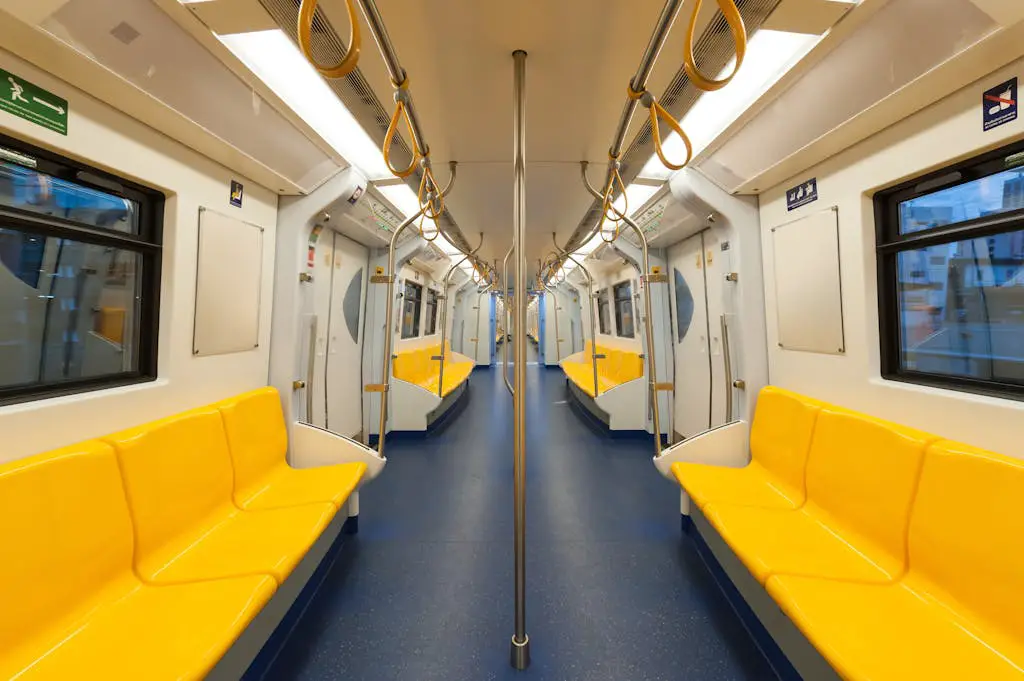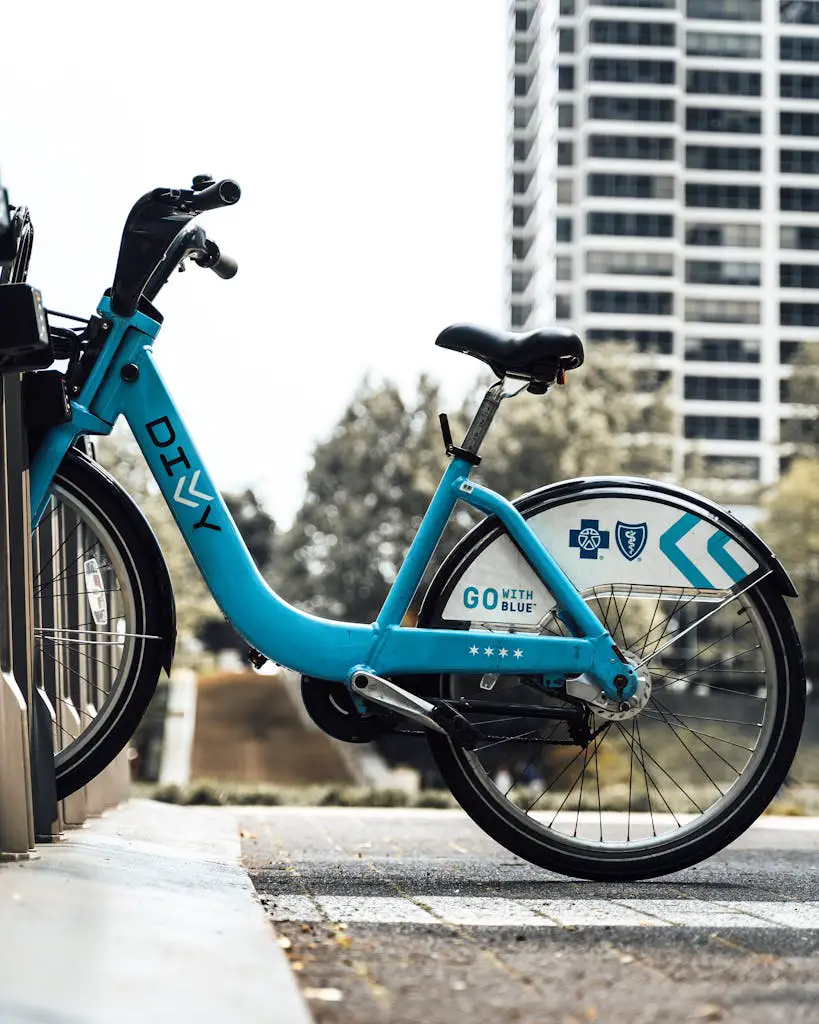7 Best Transportation Options for Someone on Probation or Without a Driver’s License
Description: Discover the best and most reliable transportation options for probationers and individuals without a driver’s license, including affordable bikes, public transit, and ride-sharing services
Table of Contents:
Introduction
- The importance of reliable transportation for someone on Probation
- Bicycles: Affordable and Flexible
- Benefits of cycling for probationers
- Top 3 budget-friendly bike options
- Safety gear and maintenance tips
- Public Transportation: Economical and Widely Available
- Advantages of buses and trains
- Tips for finding discounted passes
- Apps for tracking public transit schedules
- Making the most of public transportation
- Ride-Sharing Services: The Convenient and Accessible Way To Travel Nowadays
- Overview of popular ride-sharing apps
- Comparison of costs and features
- Tips for using ride-sharing services while on probation
- Safety considerations
- Carpooling and Rideshare Programs
- Benefits of sharing rides
- Popular carpooling apps and websites
- Setting up a successful carpool
- Safety and legal considerations for probationers
- Scooters and E-Bikes: Modern Alternatives
- Pros and cons of scooters and e-bikes
- Top 3 recommended models
- Legal considerations for probationers
- Safety tips and maintenance essentials
- Car Rental and Car Sharing Services
- Short-term car rental options
- Car-sharing programs explained
- Requirements and potential restrictions for probationers
- Walking: The Most Annoying Yet Affordable Option
- Benefits of walking
- Safety tips for pedestrians
- Recommended gear for comfortable walking
FAQs
- Common questions about transportation for probationers
Conclusion
- Recap of transportation options
- Importance of choosing the right option
Introduction
For many probationers (and especially for those who may not have a valid driver’s license), reliable transportation is not just a convenience—it’s an absolute necessity.
The challenge of getting from point A to point B can be a nightmare when you’re juggling court-mandated appointments, work commitments, and personal responsibilities.
The stress is very much real.
Whether you’re reporting to your probation officer, attending counseling sessions, or commuting to a job, having dependable transportation is crucial for successfully completing your probation and rebuilding your life.
Transportation challenges for those on probation or community control can include financial constraints, license suspensions, and restrictions on travel.
All these issues make it difficult to meet probation requirements, maintain employment, and attend necessary programs – jeopardizing the successful completion of any program, thus screwing with your freedom.
However, with some creativity and resourcefulness, there are various transportation options available that can help you stay on track and compliant with your probation terms and conditions.
In this comprehensive guide, we’ll explore a range of transportation solutions tailored to the unique needs of probationers, those without a valid driver’s license, and those on some form of court mandated “punishment”.
From budget-friendly bicycles to convenient ride-sharing services, we’ll cover the pros and cons of each option, provide practical tips, and offer recommendations to help you navigate your transportation needs effectively.
The key to successful probation is reliability and consistency. By finding a transportation method that works for you, you’ll be better equipped to meet your obligations and demonstrate your commitment to positive change. Let’s dive into the world of transportation options and find the perfect fit for your situation.
1. Bicycles: Affordable and Flexible
Cycling is an excellent transportation option for probationers and those who do not possess a valid driver’s license, offering a combination of affordability, flexibility, and health benefits. Here’s why bikes can be a game-changer for those on probation:
Benefits of cycling for probationers:
- Cost-effective: Once you have a bike, your transportation costs are minimal.
- No license required: Perfect for those with suspended licenses.
- Health-boosting: Regular cycling improves physical and mental well-being.
- Environmentally friendly: Zero emissions and reduced carbon footprint.
- Flexibility: Avoid traffic jams and parking bullshit.
Top 3 budget-friendly bike options:
- Schwinn Discover Hybrid Bike
- Perfect for urban commuting
- Comfortable upright riding position
- 21-speed shifters for versatility
- Priced around $300-$400
- Vilano Diverse 3.0 Performance Hybrid Bike
- Lightweight aluminum frame
- 24-speed drivetrain for various terrains
- Disc brakes for reliable stopping power
- Priced around $250-$350
- 6KU Aluminum Fixed Gear Single-Speed Bike
- Simple, low-maintenance design
- Flip-flop hub for fixed-gear or freewheel riding
- Stylish urban look
- Priced around $200-$300
Safety gear and maintenance tips:
- Essential safety gear:
- Helmet: Always wear a properly fitting helmet.
- Lights: Use front and rear lights for visibility, especially at night.
- Reflective clothing: Increase your visibility to drivers.
- Lock: Invest in a sturdy U-lock to prevent theft.
- Basic maintenance:
- Keep tires properly inflated for efficient riding.
- Regularly clean and lubricate the chain.
- Check and tighten bolts monthly.
- Learn basic repairs like fixing a flat tire.
- Bike maintenance resources:
- YouTube tutorials for DIY repairs
- Local bike shops often offer free basic maintenance classes
- Mobile bike repair services for convenience
By choosing cycling as your primary mode of transportation, you’re not only saving money but also gaining independence and improving your health. Remember to always follow traffic laws and be aware of your surroundings to ensure safe travels.
- Public Transportation: Economical and Widely Available

Public transportation is often an overlooked gem for probationers seeking reliable and affordable travel options. Buses, trains, and light rail systems can provide extensive coverage, especially in urban and suburban areas. Let’s explore the advantages and tips for making the most of public transit.
Advantages of buses and trains:
- Cost-effective: Often way cheaper than owning and maintaining a car
- Reliable schedules: Many systems offer frequent and predictable service
- Stress-free travel: No need to worry about traffic or parking
- Environmentally friendly: Reduces individual carbon footprint
- Opportunity for productivity: Use travel time for reading or work
Tips for finding discounted passes:
- Look for probationer-specific programs: Some cities offer discounted or free passes for individuals on probation or parole.
- Investigate income-based discounts: Many transit authorities provide reduced fares for low-income riders.
- Consider monthly passes: These often offer significant savings compared to daily or weekly fares.
- Student discounts: If you’re enrolled in educational programs, you may qualify for reduced rates.
- Senior and disability discounts: Check if you’re eligible for these categories of reduced fares.
- Employer programs: Some workplaces offer transit benefits or pre-tax fare purchasing options.
Apps for tracking public transit schedules:
- Google Maps: Offers real-time transit information in many cities
- Transit App: Provides real-time departures and trip planning
- Moovit: Features live navigation and service alerts
- Citymapper: Offers multimodal trip planning in major cities
- Local transit apps: Many cities have their own official apps with real-time data
Making the most of public transportation:
- Plan your trips in advance to allow for transfer times and potential delays.
- Consider combining public transit with other options like walking or biking for first/last mile connections.
- Use transit time productively by reading, listening to podcasts, or completing small tasks.
- Familiarize yourself with the system map and major transfer points to navigate efficiently.
- Always carry your transit pass or exact change for fares.
Public transportation etiquette:
- Offer your seat to elderly, disabled, or pregnant passengers.
- Keep conversations quiet and use headphones for music or videos.
- Don’t eat or drink on vehicles unless it’s allowed.
- Keep your belongings close and be mindful of other passengers’ space.
By mastering the public transportation system in your area, you can create a reliable and affordable travel plan that meets your probation requirements and personal needs. Remember to always check with your probation officer about any travel restrictions or reporting requirements related to your use of public transit.
- Ride-Sharing Services: The Convenient and Accessible Way To Travel Nowadays

Ride-sharing services have revolutionized transportation, offering a flexible and convenient option for many probationers and those individuals with no driver’s license. These services can be particularly useful for occasional trips or when other transportation methods aren’t available. Let’s delve into the world of ride-sharing and how it can benefit those on probation.
Overview of popular ride-sharing apps:
- Uber: Available in many cities worldwide, offering various service levels
- Lyft: Uber’s main competitor, known for friendly service and community focus
- Via: Focuses on shared rides, often at lower prices
- Grab: Popular in Southeast Asian countries
- Didi: Dominant in China and expanding globally
Comparison of costs and features:
- Uber:
- Offers UberX (standard), UberXL (larger vehicles), and luxury options
- Upfront pricing available
- Surge pricing during high-demand periods
- Rating system for both drivers and passengers
- Lyft:
- Similar pricing structure to Uber
- Often runs promotions for discounted rides
- Shared ride option for lower costs
- Known for friendly drivers and community engagement
- Via:
- Focuses on shared rides for lower prices
- Fixed rates in some cities
- Limited to certain urban areas
- Can be significantly cheaper for longer trips
Cost-saving tips:
- Use the shared ride options when available
- Compare prices between apps before booking
- Always look for promotional codes and discounts
- Avoid peak hours to sidestep surge pricing
Tips for using ride-sharing services while on probation:
- Plan ahead: Schedule rides in advance for important appointments to ensure timeliness.
- Communicate with drivers: Let them know if you have time-sensitive travel needs.
- Use the share trip feature: Share your ride details with your probation officer if required.
- Maintain a good passenger rating: This ensures you’ll have access to rides whenever you need them.
- Keep receipts: Document your trips in case you need to provide proof of travel to your probation officer.
- Be aware of restricted areas: Ensure your rides don’t take you to prohibited locations.
- Consider setting up a business profile: This can help separate probation-related travel from personal trips.
Safety considerations:
- Verify the driver and vehicle details before entering the car
- Share your trip status with a trusted contact
- Sit in the back seat when traveling alone
- Trust your instincts and don’t hesitate to cancel a ride if you feel uncomfortable
Potential drawbacks:
- Can be more expensive than public transportation for regular use
- Availability may be limited in rural areas
- Surge pricing can make costs unpredictable
- Reliance on smartphone and internet access
Ride-sharing services can be a valuable part of a probationer’s transportation strategy, especially when combined with other options. They offer flexibility and convenience, which can be crucial for meeting probation requirements and maintaining employment. However, it’s important to budget carefully and use these services strategically to manage costs effectively.
- Carpooling and Rideshare Programs
Carpooling and rideshare programs offer a cost-effective and social transportation option for probationers. These methods can help you save money, reduce stress, and potentially build positive relationships within your community. Let’s explore the benefits and considerations of shared rides.
Benefits of sharing rides:
- Cost savings: Split fuel and parking costs among passengers
- Reduced stress: Take turns driving and enjoy company during commutes
- Environmental impact: Fewer cars on the road means less pollution
- Networking opportunities: Connect with coworkers or community members
- Potential for consistent scheduling: Ideal for regular commutes
Popular carpooling apps and websites:
- Waze Carpool: Matches riders with drivers going the same way
- Scoop: Focuses on commuters and workplace carpooling
- Zimride: Popular for longer distance rides and college communities
- Blablacar: Widely used in Europe for intercity travel
- Local community boards or Facebook groups: Often have carpool arrangements
How to find carpool partners:
- Ask coworkers about existing carpool groups
- Check with your employer for company-sponsored programs
- Use online platforms to connect with people in your area
- Join local community groups or forums
- Inquire at your probation office about approved rideshare programs
Setting up a successful carpool:
- Establish clear expectations: Discuss schedules, routes, and cost-sharing upfront
- Create a rotation schedule: Decide how often each person will drive
- Agree on pickup and drop-off points: Choose convenient locations for everyone
- Establish communication protocols: Use group chats or apps to coordinate
- Discuss payment methods: Decide how and when costs will be shared
Safety considerations for carpooling:
- Meet potential carpool partners in public places before committing
- Share your carpool details with your probation officer or a trusted contact
- Establish ground rules for behavior and conversations during rides
- Have a backup plan in case your carpool falls through
- Trust your instincts and don’t ride with anyone who makes you uncomfortable
Legal considerations for probationers:
- Ensure your carpool partners are aware of any travel restrictions you may have
- Avoid carpooling with individuals who may compromise your probation terms
- Keep records of your carpool arrangements and trips for your probation officer
Etiquette tips for successful carpooling:
- Be punctual and respectful of others’ time
- Keep your vehicle clean and well-maintained when it’s your turn to drive
- Avoid sensitive topics of conversation
- Be flexible and understanding of occasional schedule changes
- Contribute fairly to fuel and maintenance costs
Carpooling can be an excellent option for probationers, offering a balance of affordability and reliability. It’s particularly useful for those with regular commutes to work or mandated programs.
By sharing rides, you not only save money but also demonstrate responsibility and community engagement, which can be viewed positively by probation officers.
Remember to always prioritize safety and compliance with your probation terms when arranging shared rides. With clear communication and mutual respect, carpooling can become a valuable part of your transportation strategy during probation.
- Scooters and E-Bikes: Modern Alternatives

As urban transportation evolves, scooters and e-bikes have emerged as popular alternatives for short to medium-distance travel. These options combine the flexibility of personal transportation with the eco-friendliness of non-motorized vehicles. Let’s explore how these modern alternatives can benefit probationers.
Pros and cons of scooters and e-bikes:
Pros:
- Cost-effective: Lower purchase and maintenance costs compared to cars
- Eco-friendly: Reduced carbon footprint
- Easy to park: Takes up less space than cars
- Fun and efficient: Enjoyable way to travel short distances
- Health benefits: Provides light exercise, especially with regular bikes
Cons:
- Limited range: May not be suitable for longer commutes
- Weather dependent: Less comfortable in rain or extreme temperatures
- Safety concerns: Higher risk of accidents compared to cars
- Charging needs: E-bikes and electric scooters require regular charging
- Legal restrictions: Some areas have regulations on usage and parking
Top 3 recommended models:
- Razor EcoSmart Metro Electric Scooter
- 500W motor with 12-mile range
- Comfortable padded seat
- Rear disc braking system
- Bamboo deck and adjustable handlebars
- Price range: $400-$500
- Ancheer Electric Bike
- 350W motor with 20-40 mile range
- 21-speed gear system
- Removable lithium-ion battery
- Front suspension fork for smooth rides
- Price range: $600-$700
- Gotrax GXL V2 Commuting Electric Scooter
- 250W motor with 12-mile range
- Dual braking system
- Cruise control feature
- Portable folding design
- Price range: $250-$300
Legal considerations for probationers:
- Check local laws regarding e-bike and scooter usage on roads and sidewalks
- Understand speed limits and where these vehicles are permitted
- Be aware of any licensing or registration requirements
- Follow all traffic laws and signals
- Use required safety equipment such as helmets and lights
Safety tips:
- Always wear a helmet and consider additional protective gear
- Use hand signals when turning or stopping
- Stay visible with reflective clothing and lights
- Be predictable in your movements and follow traffic rules
- Maintain your vehicle regularly to ensure it’s in good working condition
Maintenance essentials:
- Keep tires properly inflated
- Regularly check and tighten bolts and screws
- Clean and lubricate the chain (for e-bikes)
- Keep the battery charged and store it properly
- Have your e-bike or scooter serviced by a professional periodically
Integrating scooters and e-bikes into your transportation plan:
- Use for short trips to probation meetings, work, or appointments
- Combine with public transit for longer journeys
- Consider as a first/last mile solution in conjunction with other transportation methods
- Use bike-sharing or scooter-sharing services to try before you buy
Scooters and e-bikes can offer probationers an affordable and flexible transportation option, particularly in urban areas.
They provide a level of independence that can be crucial for meeting probation requirements and maintaining employment. However, it’s essential to balance the benefits with safety considerations and ensure compliance with local laws and probation terms.
Before investing in an e-bike or scooter, consult with your probation officer to ensure it aligns with your supervision conditions. With proper use and care, these modern alternatives can be a valuable addition to your transportation toolkit during probation.
- Car Rental and Car Sharing Services
While owning a car might not be feasible for many probationers due to financial constraints or legal restrictions, car rental and car sharing services can provide temporary access to personal transportation when needed. These options offer flexibility for specific situations such as job interviews, medical appointments, or family emergencies.
Short-term car rental options:
- Traditional car rental companies:
- Examples: Enterprise, Hertz, Avis
- Pros: Wide variety of vehicles, multiple locations
- Cons: Can be expensive for longer periods, may require credit card and proof of insurance
- Peer-to-peer car rental:
- Examples: Turo, Getaround
- Pros: Often cheaper than traditional rentals, more diverse vehicle options
- Cons: Availability can be limited, may require more planning
- Car sharing programs:
- Examples: Zipcar, Car2Go
- Pros: Hourly rentals available, convenient for short trips
- Cons: Limited to specific service areas, requires membership
Comparing costs:
- Traditional rentals: Generally start around $30-$50 per day
- Peer-to-peer rentals: Can range from $20-$100+ per day depending on the vehicle
- Car sharing: Typically charge by the hour, ranging from $5
Car sharing programs explained: Car sharing programs offer members access to vehicles for short-term use, often by the hour. Here’s how they typically work:
- Membership: Sign up and pay a membership fee (some have monthly plans)
- Reservation: Book a car through an app or website
- Access: Use a smartphone app or membership card to unlock the vehicle
- Drive: Use the car for your allotted time
- Return: Park the car in a designated spot and end your reservation
Requirements and potential restrictions for probationers:
- Valid driver’s license: Essential for all car rentals and sharing services
- Age restrictions: Many companies require renters to be 21 or 25+
- Credit or debit card: Often needed for payment and security deposit
- Insurance: May be offered by the rental company or required separately
- Background checks: Some services conduct checks which may impact eligibility
- Travel restrictions: Ensure rental use complies with probation travel limits
Tips for using car rentals and sharing services:
- Plan ahead: Book in advance for better rates and availability
- Compare prices: Check multiple services for the best deal
- Read the fine print: Understand all fees and insurance options
- Document the car’s condition: Take photos before and after use
- Follow all rules: Adhere to the rental agreement and probation terms
- Return on time: Avoid late fees and potential probation violations
- Walking: The Most Annoying Yet Affordable Option

While not suitable for all situations, walking remains the most accessible and affordable transportation option available to probationers. It’s an often-overlooked method that offers numerous benefits beyond just getting from point A to point B.
Benefits of walking:
- Zero cost: No equipment or fees required
- Health improvements: Boosts cardiovascular health and mental well-being
- Stress reduction: Provides time for reflection and decompression
- Environmental impact: Zero emissions and reduced carbon footprint
- Flexibility: No schedules or routes to follow
- Community engagement: Opportunity to know your neighborhood better
Safety tips for pedestrians:
- Stay visible: Wear bright or reflective clothing, especially at night
- Use sidewalks: When available, always walk on sidewalks
- Face traffic: If no sidewalk, walk facing oncoming traffic
- Be predictable: Use crosswalks and obey traffic signals
- Stay alert: Avoid distractions like texting while walking
- Plan your route: Choose well-lit, populated areas when possible
Recommended gear for comfortable walking (with affiliate links):
- Comfortable walking shoes: New Balance Fresh Foam 1080v11 (Affiliate Link)
- Reflective vest: Reflective Safety Vest by GoxRunx (Affiliate Link)
- Hydration pack: CamelBak HydroBak Light (Affiliate Link)
- Pedometer or fitness tracker: Fitbit Inspire 2 (Affiliate Link)
Making walking a viable option:
- Plan your day: Allow extra time for walking to appointments
- Combine with other methods: Walk to bus stops or carpool meeting points
- Use for short trips: Consider walking for journeys under a mile
- Stay motivated: Set step goals and track your progress
- Be prepared: Check weather forecasts and dress appropriately
Remember, the best solution might involve combining multiple methods. For example, you might walk to a bus stop, take public transit for the majority of your journey, and use a ride-sharing service for occasional longer trips.
It’s crucial to communicate openly with your probation officer about your transportation plan. They may be able to provide additional resources or advice specific to your situation. Always ensure that your chosen transportation methods comply with your probation terms and don’t put you at risk of violations.
By taking a proactive approach to your transportation needs, you’re demonstrating responsibility and commitment to meeting your probation requirements. This can positively impact your probation experience and contribute to your overall success in rebuilding your life.
FAQs:
Q: Can probationers use ride-sharing services? A: Generally, yes. Ride-sharing services can be a useful option for probationers. However, always check with your probation officer to ensure it doesn’t violate any specific terms of your probation.
Q: Are there any transportation methods probationers should avoid? A: While it depends on individual probation terms, probationers should generally avoid any illegal or unlicensed transportation methods. Also, be cautious about accepting rides from individuals who might compromise your probation (e.g., other offenders or negative influences).
Q: How can I afford transportation while on probation? A: Look for low-cost options like walking or cycling for short distances. For longer trips, consider public transportation or carpooling. Many cities offer discounted transit passes for low-income individuals. Additionally, budgeting carefully and prioritizing transportation costs can help ensure you have the means to meet your probation requirements.
Conclusion
Remember, reliable transportation is an absolutely crucial factor of successfully completing your probation terms and moving forward with your life.
Although it can be incredibly stressful and difficult, but as we’ve explored,there are numerous transportation options available to suit your needs and circumstances.
From the affordability of walking and cycling to the convenience of ride-sharing and public transit, each method offers unique benefits and considerations.
The key to choosing the right transportation option lies in understanding your specific case needs, restrictions, and resources. Consider factors such as:
- Distance of regular travel (work, probation meetings, etc.)
- Budget constraints
- Physical ability and health
- Local infrastructure and available services
- Probation terms and travel restrictions







One Comment